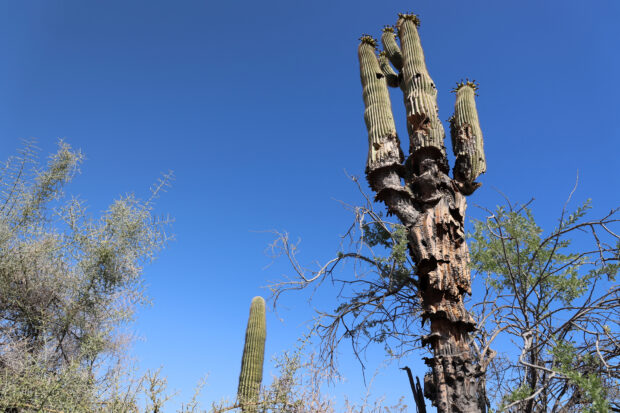
View of a Saguaro, a resilient desert cacti affected by Arizona’s extreme heat and prolonged drought, in Phoenix, Arizona, U.S., July 25, 2023. REUTERS
PHOENIX — Arizona’s saguaro cacti, a symbol of the U.S. West, are leaning, losing arms and in some cases falling over during the state’s record streak of extreme heat, a scientist said on Tuesday.
Summer monsoon rains the cacti rely on have failed to arrive, testing the desert giants’ ability to survive in the wild as well as in cities after temperatures above 110 degrees Fahrenheit (43 Celsius) for 25 days in Phoenix, said Tania Hernandez.
“These plants are adapted to this heat, but at some point the heat needs to cool down and the water needs to come,” said Hernandez, a research scientist at Phoenix’s 140-acre (57-hectare) Desert Botanical Garden, which has over 2/3 of all cactus species, including saguaros which can grow to over 40 feet (12 meters).
Plant physiologists at the Phoenix garden are studying how much heat cacti can take. Until recently many thought the plants were perfectly adapted to high temperatures and drought. Arizona’s heat wave is testing those assumptions.
Cacti need to cool down at night or through rain and mist. If that does not happen they sustain internal damage. Plants now suffering from prolonged, excessive heat may take months or years to die, Hernandez said.
Cacti in Phoenix are being studied as the city is a heat island, mimicking higher temperatures plants in the wild are expected to face with future climate change, Hernandez said.